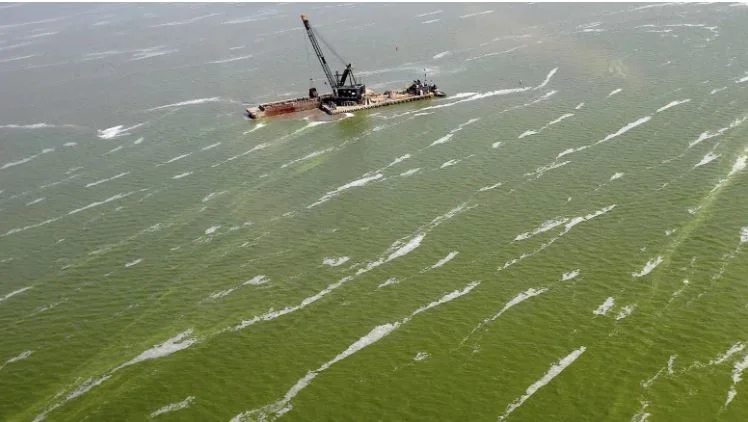In July, 2022, an SHA notice posted on the resort village’s Facebook page warned people to avoid swimming or skiing and to keep children and pets away from the water. The village later levels of toxic blue-green algae were 600 times higher than recommended for public recreation. This year, it’s a different story. “We don’t have any issues in terms of blue-green algae and E. coli,” said Mattick. “So it’s good for swimming or whatever you want to do.”
Ice loss, toxic algae blooms: Canadian study looks at Northern Hemisphere's warming lakes
Lakes in the Northern Hemisphere have been warming six times faster since 1992 than they were at any other time period in the past 100 years, a Canadian study suggests. The study, entitled “Loss of Ice Cover, Shifting Phenology and More Extreme Events in Northern Hemisphere Lakes,” was published in the October issue of the Journal of Geophysical Research: Biogeosciences and led by York University in Ontario.
Algae blooms becoming more intense, lasting longer in Qu'Appelle Valley lakes: U of Regina biologist
First Nations leaders, community activists and university scientists say they're growing increasingly worried about the Qu'Appelle Valley chain of lakes, with water quality sometimes dipping below recreational use standards and toxic algae blooms increasing in severity. "We're going to get hit with some wicked blue-green-purple algae if we don't start building policies and protecting our fresh water," said Aura Lee MacPherson, chair of the Calling Lakes Ecomuseum, an advocacy group that works to protect the Lower Qu'Appelle River watershed, in southeastern Saskatchewan.
'The Blob' is back: Scientists track blanket of warm water off West Coast
A large swath of warm water spanning thousands of kilometres from the Bering Sea to Mexico, nicknamed by scientists as “the Blob,” has returned to the West Coast, threatening marine life and fisheries. The Blob was christened in 2014, after a similar natural event that spanned two years devastated the salmon industry, damaged ecosystems and disrupted wildlife like whales, sea lions and crabs. “This is a massive pool… of warm water that’s in the Pacific, that is thousands of kilometres huge,” said senior climatologist for Environment Canada David Phillips on CTV’s Your Morning Tuesday. “This one stretches from the Bering Strait, the Bering Sea, right through the Gulf of Alaska, right through to California, British Columbia, and down to Mexico.”
Stopping algae blooms may start on farmlands
A handful of Chatham farms might hold the answer to reducing toxic algae blooms in the Great Lakes. These farms are collecting and analyzing their agricultural runoff, in hope of reducing the amount of phosphorus entering the waterways. It's part of a project, started by two organizations in Spring 2016, which aims to come up with a strategy to deal with toxic algae blooms. Out of that idea for the project — between the Ontario Federation of Agriculture and the Great Lakes and St. Lawrence Cities Initiative — came the Thames River Phosphorus Reduction Collaborative.






